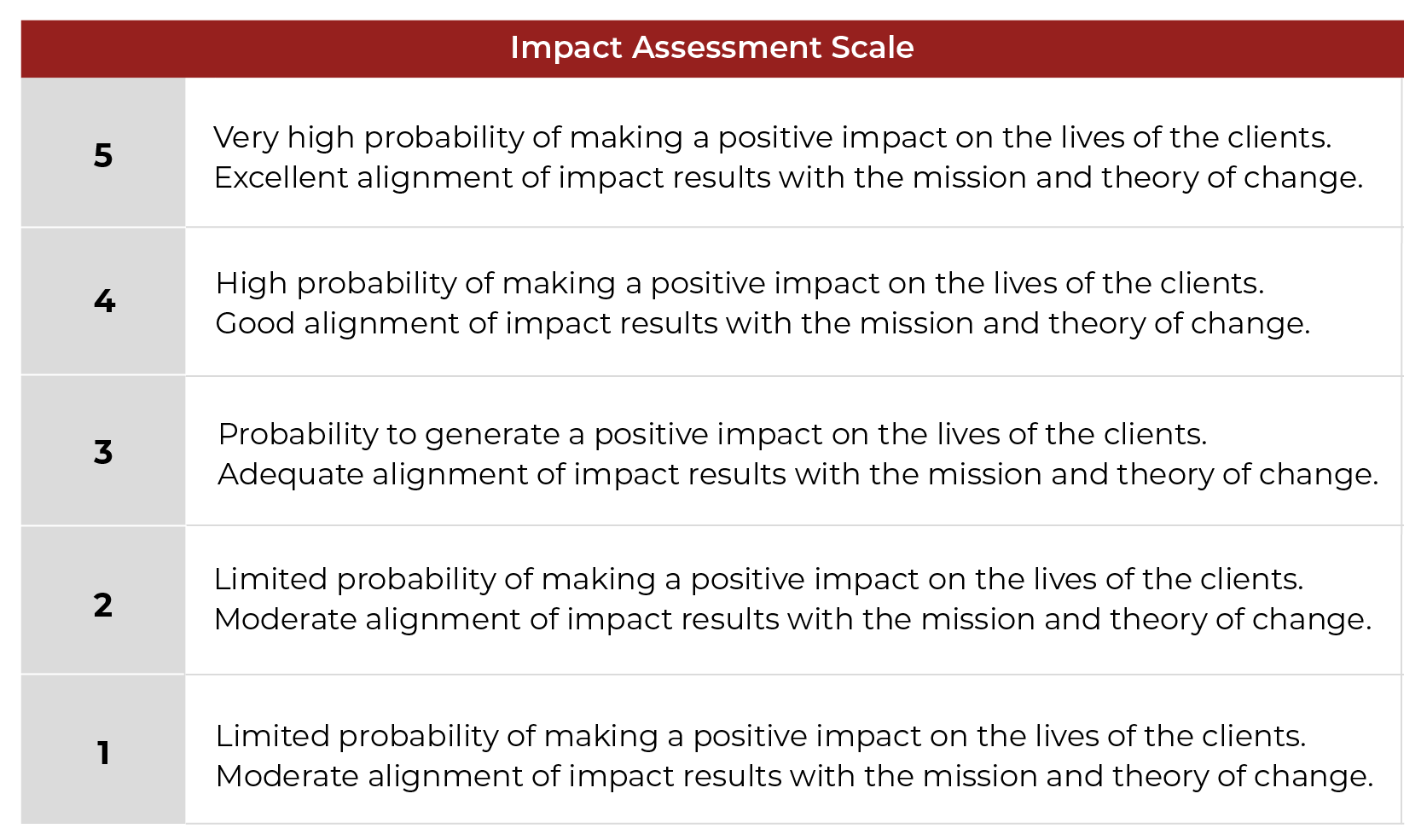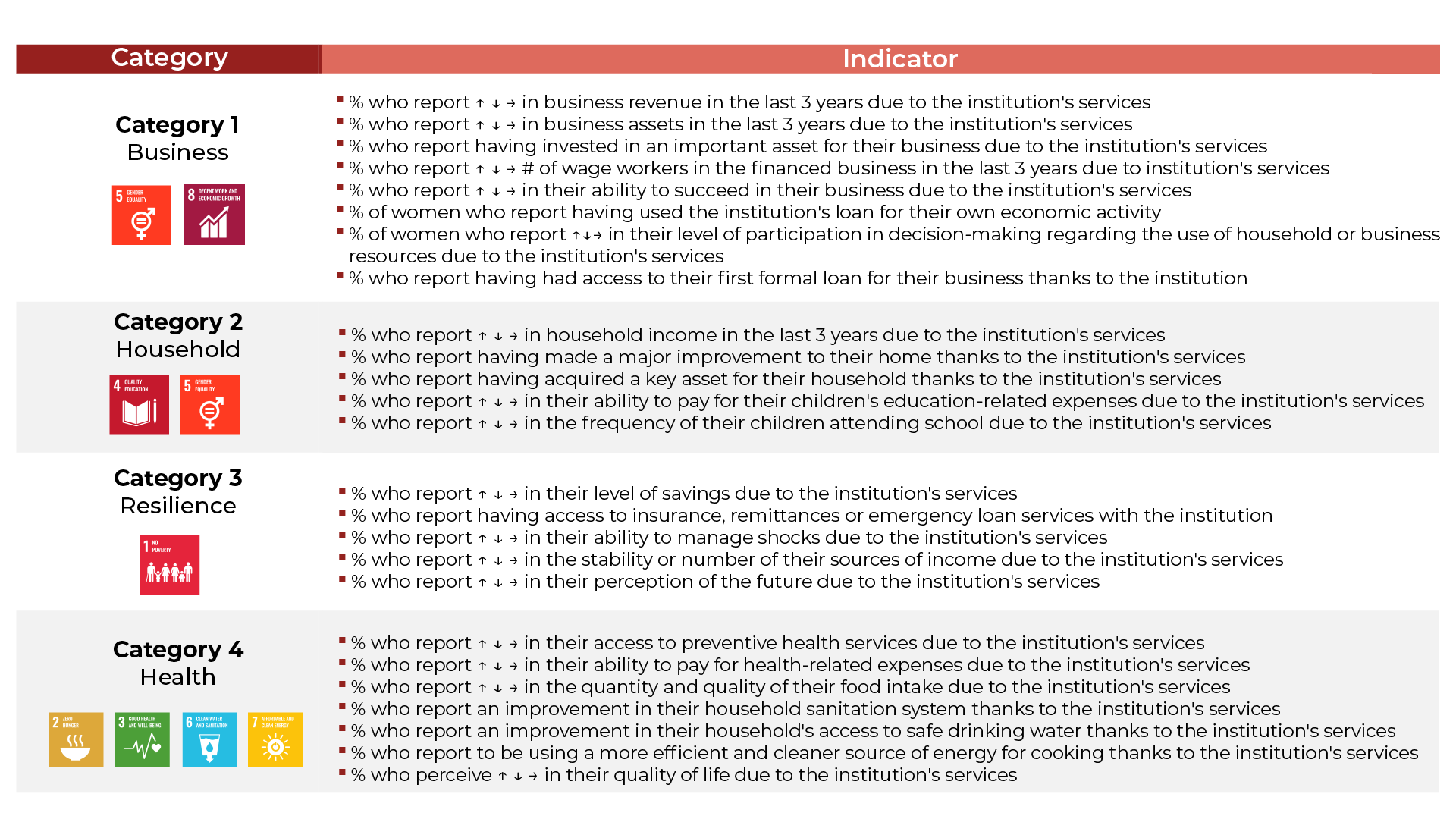What?
The Impact Assessment measures the capacity of a Financial Service Providers (FSP) in creating positive impact in the lives of their clients. This evaluation encompasses a thorough analysis of both impact management systems and achieved impact results, providing a comprehensive overview of the FSP’s effectiveness in delivering meaningful outcomes
Who?
The Impact Assessment its a valuable tool by FSP’s to strenghten their ability to monitor and report impact indicators, as well as the fulfillment of its social objectives and the theory of change, in order to maximize its impact.
Why?
Impact management empowers FSP by providing:
- An assessment of its impact management systems, offering valuable insights to identify key gaps and areas for improvement. This assessment serves as a foundation for the FSP to enhance its impact management practices.
- An analysis of the results of the reached clients and the positive changes in their lives, attributed to the institution’s services, serves to illustrate the impact created. This assessment aligns with the institution’s theory of change and the Sustainable Development Goals (SDGs), providing a clear demonstration of the tangible effects on clients. By presenting these outcomes, the institution ensures accountability to its investors and other stakeholders.
How it works?
- The Impact Assessment is based on the 5 impact dimensions of the Impact Management Project (IMP).
- The indicators used are aligned with the Universal Outcome Indicators defined by the Social Performance Task Force (SPTF) and the United Nations Sustainable Development Goals (UN SDGs), also considering the FSP’s mission or theory of change.
- The measurement of impact indicators is based on the data available in the FSP’s database and an ad-hoc survey to clients, ensuring the use of complete and reliable information through a longitudinal analysis methodology and interview techniques to improve the ability to collect information.
- The results are compared with national and international statistics, and with MFR’s internal benchmark through ATLAS.
- MFR uses its own Impact Assessment tool to produce a comprehensive report that includes graphs, tables, and statistical analysis for each impact category.
- The result of the Impact Assessment includes an Impact Score based on a scale from 1 (least impact) to 5 (greatest impact), representing the probability of generating a positive impact in the clients’ lives, allowing for a comparison between the different FSPs.
Impact Assessment scale

Examples of indicators analyzed
